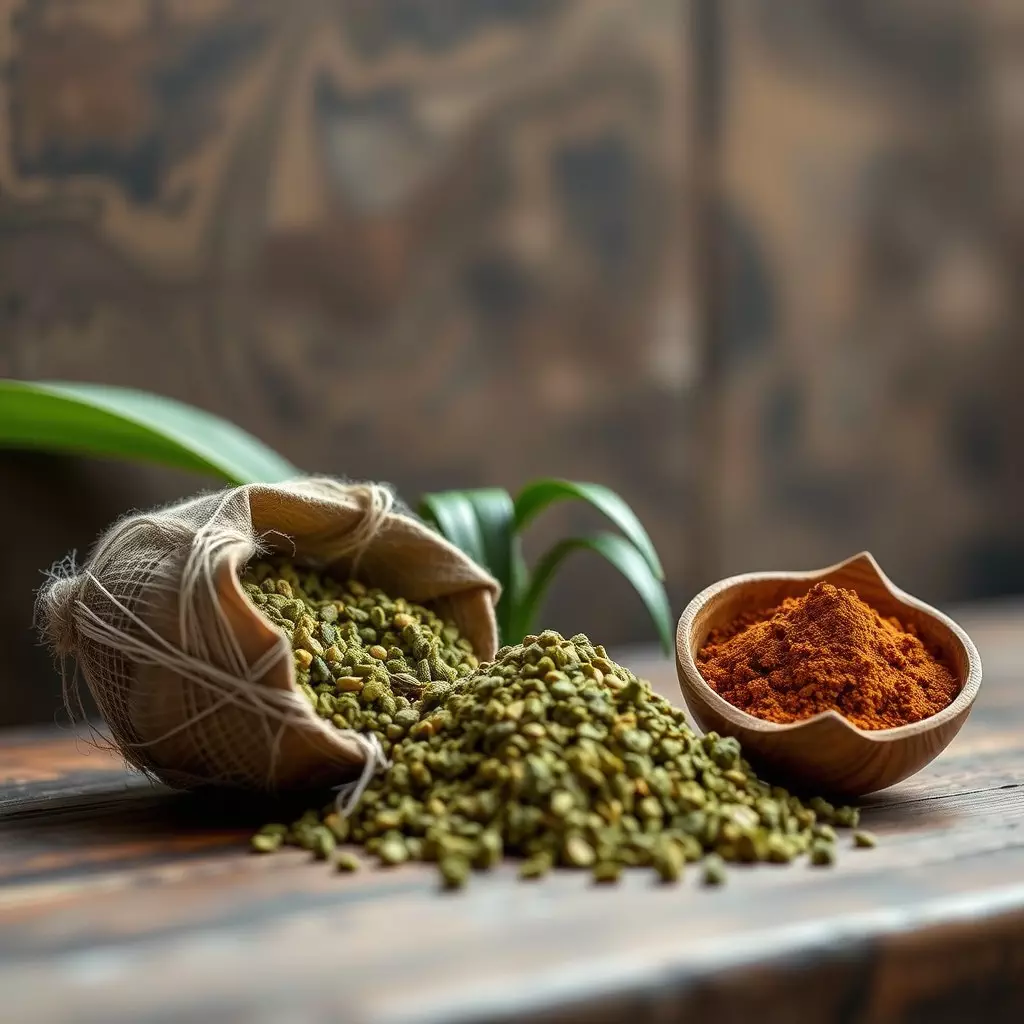The article explores the dual role of inflammation in the immune system, highlighting its importance in healing yet the risks of chronic inflammation leading to various diseases. It compares Green Maeng Da and Red Bali kratom, two strains known for their anti-inflammatory properties, with Green Maeng Da being an energizing choice for managing inflammation without sedation, and Red Bali being preferred for its relaxing, pain-relieving effects that also reduce inflammation. The discussion emphasizes the need for personal experience in assessing their effectiveness for chronic inflammatory conditions, while warning about the necessity of consulting healthcare professionals due to kratom's regulatory status and potential side effects. Both strains are significant in the debate over natural remedies for inflammation, with Green Maeng Da and Red Bali being at the forefront. The article also delves into the chemical composition of these strains, noting that Green Maeng Da contains a high concentration of 7-hydroxymitragynine, an alkaloid with anti-inflammatory effects possibly linked to suppressing NF-κB activation. Red Bali is noted for its higher content of mitraphyne, which may target NLRP3 inflammasomes. The distinct effects on inflammation from these alkaloids underscore the importance of understanding kratom's chemical makeup for informed use and future research into therapeutic applications.
Inflammation, a protective response by the immune system, plays a pivotal role in healing and defending against infection. However, chronic inflammation can lead to various health issues, including arthritis, diabetes, and heart disease. Exploring natural remedies, this article delves into kratom’s potential for inflammation reduction. Known for its diverse alkaloid profile, kratom strains like Green Maeng Da and Red Bali have garnered attention for their anti-inflammatory properties. We examine the evidence comparing these strains and elucidate how specific alkaloids in kratom may mitigate inflammatory responses. Join us as we navigate the complexities of inflammation and the role of herbal supplements like kratom in managing this critical aspect of health.
- Understanding Inflammation and Its Impact on Health
- Green Maeng Da vs. Red Bali Kratom: A Comparative Analysis for Inflammation Reduction
- The Role of Alkaloids in Mitigating Inflammatory Responses: Insights from Kratom Research
Understanding Inflammation and Its Impact on Health

Inflammation is a biological response of the immune system to harmful stimuli such as pathogens, damaged cells, or irritants. It plays a pivotal role in defending the body against infection and initiates the healing process after injury. However, when inflammation persists beyond its necessary duration, it can become chronic, contributing to various health issues like arthritis, diabetes, heart disease, and certain cancers. This chronic state of inflammation, known as low-grade inflammation, is detrimental to overall health and well-being.
Enter the debate between green Maeng Da and red Bali, two prominent strains of kratom that are often contrasted for their anti-inflammatory properties. Green Maeng Da, celebrated for its energizing effects and balanced alkaloid profile, is frequently sought after for its potential to modulate inflammation without the sedative side effects typically associated with other strains. On the other hand, red Bali kratom is known for its calming and analgesic properties, which may also contribute to reducing inflammation. Users often explore these strains to find relief from chronic inflammatory conditions, with personal experiences highlighting their efficacy in managing symptoms that detract from quality of life. As with any health-related decision, it is imperative to consult healthcare professionals before incorporating kratom into one’s regimen, especially given the regulatory status and potential side effects associated with its use.
Green Maeng Da vs. Red Bali Kratom: A Comparative Analysis for Inflammation Reduction

Green Maeng Da and Red Bali Kratom are two distinct strains of Mitragyna speciosa, commonly known as kratom, that have garnered attention for their potential anti-inflammatory properties. Both strains offer unique alkaloid profiles, which may influence their effects on the body’s inflammatory response.
Green Maeng Da kratom is renowned for its balanced alkaloid content, which includes 7-hydroxymitragynine and mitragynine, both of which are believed to contribute to its anti-inflammatory effects. Users often report that Green Maeng Da helps manage inflammation without the sedative effects associated with some strains. Its stimulating properties may also enhance overall well-being and energy levels, making it a preferred choice for individuals seeking pain and inflammation relief during active periods.
In contrast, Red Bali kratom is celebrated for its potent analgesic and anti-inflammatory properties, which are attributed to its higher concentration of mitragynine compared to 7-hydroxymitragynine. This strain is typically associated with a calming and sedative effect, which can be beneficial for those experiencing chronic pain or inflammation. Its relaxing influence might also promote better sleep quality, aiding in the recovery process. The choice between Green Maeng Da and Red Bali kratom for inflammation reduction will depend on an individual’s specific needs, as well as their preference for either a more energizing or sedating experience. Users should approach the use of kratom with caution and consider consulting healthcare professionals before integrating it into their health regimen, especially given the varying legal statuses of kratom across different regions.
The Role of Alkaloids in Mitigating Inflammatory Responses: Insights from Kratom Research

7-hydroxymitragynine and mitraphyne, two key alkaloids present in kratom, have been the subject of considerable scientific scrutiny for their anti-inflammatory properties. Research indicates that these compounds may contribute to kratom’s potential to modulate inflammatory responses by influencing signaling pathways associated with inflammation. For instance, 7-hydroxymitragynine has been observed to suppress the activation of nuclear factor kappa-light-chain-enhancer of activated B cells (NF-κB), a transcription factor that plays a pivotal role in immune response and inflammation. This action could be beneficial for conditions characterized by excessive inflammation, where NF-κB is overactive. Mitraphyne, on the other hand, may exert its effects through different mechanisms, potentially targeting inflammasomes such as NLRP3, which are involved in the body’s natural immune response to stress and pathogens.
Comparative studies have highlighted the distinct alkaloid profiles of strains like Green Maeng Da and Red Bali, suggesting that these variations could lead to different effects on inflammation. For example, Green Maeng Da kratom is known for its higher concentration of 7-hydroxymitragynine, which may make it particularly effective in reducing inflammatory responses. Conversely, Red Bali kratom typically contains a higher proportion of mitraphyne, which could influence the immune system’s response to inflammation differently. The specific alkaloid content of each strain contributes to their unique effects, and understanding these differences is crucial for both research and consumer use. As such, the choice between Green Maeng Da and Red Bali may depend on individual needs and the specific inflammatory condition being addressed. Ongoing research continues to dissect the complex interplay between kratom alkaloids and inflammation, offering insights into potential therapeutic applications for this plant-based compound.
Green Maeng Da and Red Bali kratom varieties have garnered attention for their potential in reducing inflammation. The comprehensive analysis of available research underscores the alkaloid profile of these strains as a key factor in their anti-inflammatory effects. While more studies are warranted to fully understand their mechanisms, the current body of evidence supports the consideration of kratom for natural inflammation management. Users interested in exploring this option should consult with healthcare professionals to assess its suitability and safety within their individual health contexts. The relationship between kratom alkaloids and inflammatory response warrants continued investigation to elucidate its full potential.






